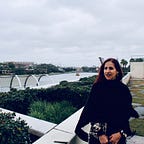I Have Ditched the lawn and am Keeping the “Weeds”.
I have ditched the lawn and am keeping the “weeds”, nature is happy and so am I. How do I know nature is happy? There is life everywhere in my garden, pollinators galore! It turns out that the pollinators love and depend on those plants we label as weeds.
According to the encyclopedia, Britannica, the definition of the word weed, is as follows: “Weed, general term for any plant growing where it is not wanted.” https://www.britannica.com/plant/weed
We really need to rethink this definition through. It does not make sense to uproot a plant that feeds wild life, to replace it with something that yields no benefit to nature. Lawns, in particular, are harmful to the environment.
According to the Permaculture Research Institute, “…a lawn is a completely artificially constructed environment that has been introduced in order to replace the natural flora that had been and would return left to its own devices.” https://www.permaculturenews.org/2016/06/03/why-our-lawns-are-bad-for-the-environment-and-how-to-change-them-for-the-better/ Apparently, lawns are appropriate in parts of Europe, due to their natural climate, but not so in the US. In short, the manicured lawn creates many problems for the environment as it requires destroying the native and natural ecosystems in order to maintain something that does not really belong there. This includes the use of herbicides, and pesticides, which alter the flora, and make their way into the water supply. I avoid all chemicals for my health and the health of all life.
Getting rid of the lawn without chemicals has been a process. I have replaced the lawn with native species and many plants that bees, butterflies, and other wildlife enjoy and depend on. As I studied the matter further, it turns out that some of these “weeds” are edible, and loaded with nutritional benefits for us, as well. One such beauty is the often unappreciated Dandelion. Once we realize the value of such a plant, one can only protect it. The Guardian has an excellent article about this lovely plant which I recommend reading. https://www.theguardian.com/lifeandstyle/gardening-blog/2015/may/12/dandelions-pollinators-wildlife-garden
This is one example of many, one should look at the natives of the area as this benefits the pollinators the best. There are different schools of thought on this and I would recommend researching your area universities that have specific information.
When working with nature, I like to practice to nursing principle of “First do no harm”. I work within the permaculture framework which supports nature to continue that awesome symbiotic relationship of all living things. It brings me great pleasure to be greeted throughout the day by beautiful bees and butterflies. It is a humbling experience to see such beauty in it’s natural environment or as close to it as possible.
Rather than the drudgery of maintaining a lawn which requires countless hours and damage to the soil, I am creating a low maintenance, food forest. It is already has the components of a wildlife refuge. It is very satisfying when you see the beauty in your own garden and the benefits for us, are also well documented . Creating a refuge for wildlife is certainly a very healing experience.
Repurposing my yard is a work in progress and I am attaching the video of the garden as it is now.
